Adam Lowe of Factum Arte explains the complicated situation behind recent optimistic media reports
The recent iconoclastic destruction carried out by the so-called Islamic State has focused the attention of politicians, journalists and the academic community on the urgent need to document cultural heritage. Mass tourism, war, natural disasters, theft and commercial exploitation are still much larger forces of damage and destruction, but the wilful disrespect for human life and archaeological remains in Iraq and Syria has shocked the world. Politicians have made public statements but have not yet been moved to action, but at least the discussion has started.
It is now essential that the right type of photographic and 3D recording is undertaken across north Africa and the Middle East, and that the resulting data is safely archived and eventually processed so that it can be made accessible for study, conservation, and in the worst case scenarios, to be rematerialised as replicas.
‘3D photography’ and media misunderstandings
There has recently been a lot of press coverage about cheap and easy ‘3D photography’ providing the solution in the Middle East. It has been possible to record stereoscopic images on ‘3D cameras’ since the 19th century, but these do not record three-dimensional data. In fact, so called 3D cameras record an illusion of three dimensions on a flat plain that can be viewed with glasses or as lenticular prints.
Photogrammetry, which is based on multiple images taken with a decent SLR camera and a constant light source, can record 3D data, and when the photographs are processed with the right software the results can be impressive. Done properly – following clearly defined protocols, with the support of multi-lingual websites and helplines – it is a relatively cheap and efficient method when access to sites is difficult, and heavy or sensitive equipment cannot be used. It is unclear from the present coverage exactly which methods are being proposed for use in Syria and Iraq, and it is sad that such an important subject is being reported with such a lack of research and understanding.
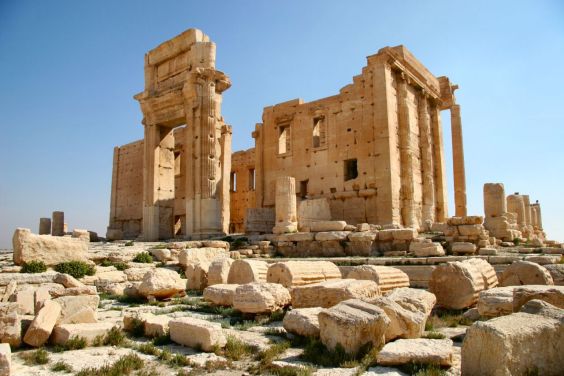
The Temple of Bel in Palmyra, Syria, as it stood before its destruction by ISIS on August 30th 2015
How much information is it currently possible to record?
In recent years 3D scanning has become part of a coherent and non-contact approach to the documentation of cultural heritage and its long-term preservation. A number of different methods exist, each with their own advantages and limitations (for further information on the different technologies, see Factum Arte’s website). The challenge is to identify the right system for the right application: no one system can do everything.
In photogrammetry, 3D data can be recorded on a vast scale, producing relief maps of the topography of a landscape from great distances. Alternatively it can be undertaken at close range and with enough resolution to document the surface of a carving – resulting in the visualisation of data not easily seen by the human eye. If this is processed with virtually generated RTI (Reflectance Transformation Imaging), high-resolution photogrammetry can be very useful for epigraphic study or condition monitoring where the ability to move the light-source can reveal important details that cannot be seen in normal photographs. Photogrammetry has the added advantage that colour and 3D are recorded at the same time.
A key part of this work is to record surfaces and forms at the highest possible resolutions, and archive them in raw formats, so the data can continue to be re-processed as technology advances. Processing data is time-consuming and requires powerful computers, software and skill. As a rule of thumb every hour spent recording in the field requires one day’s processing – and with photogrammetry the processing time can be longer depending on the resolution required. Raw data can be stored and archived whenever it is needed. So the chain of action is to record, to archive the raw data securely, and to process and make it available as the time and money becomes available. What is ultimately done with this data will be a collective decision influenced by many factors and professional bodies.
Using 3D data: the rise of high-resolution facsimiles
Digitality used to be associated with the virtual, but now the ability to rematerialise data as three-dimensional objects is demanding new skills and a different understanding of recording technologies and their application. Damage and destruction of popular heritage sites has prompted a re-evaluation of the importance of high-resolution facsimiles.
The first serious attempt in recent years to use a copy to protect an original was at Lascaux, a prehistoric cave site that was being destroyed by large numbers of visitors. ‘Lascaux 2’, a copy made and painted by hand, has been a great success. Chauvet, which opened this year, is the most recent example of a multi-million euro copy. It is also made and painted by hand, but running alongside these reconstructions is a new approach – a serious attempt to document sites digitally at high resolution, providing data for applications aimed at preserving and understanding the past in more detailed and objective ways.
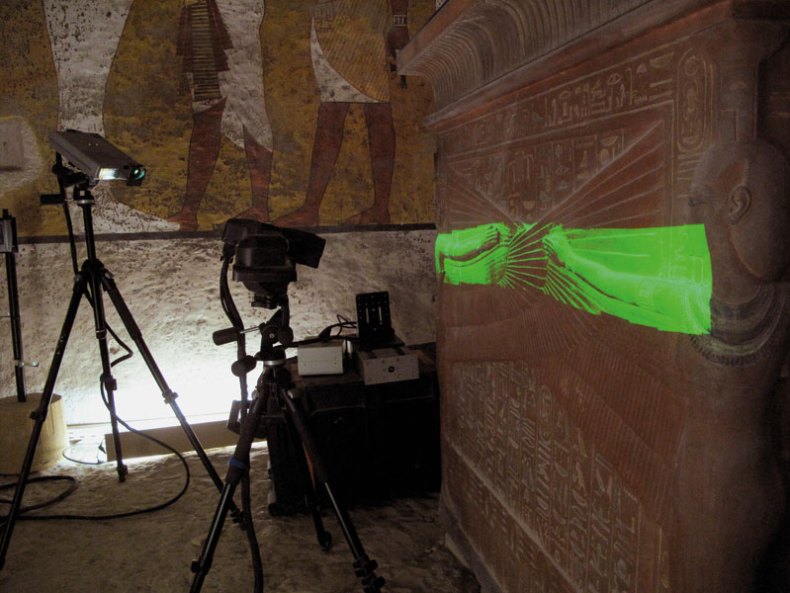
The Sidio Pro Scanner (White light scanner) during the recording of the sarcophagus in the Tomb of Tutankhamun, spring 2009 © Factum Arte
The most widely reported example of this forensic approach is the facsimile of the burial Chamber of Tutankhamun, which was installed next to Carter’s house at the entrance to the Valley of the Kings and opened to the public in April 2014. It was made by Factum Arte – the workshop I run in Madrid – and was financed by Factum Foundation and the Friends of the Royal Tombs of Egypt. Nicholas Reeves recently attracted global attention by suggesting that he has found the entrance to Nefertiti’s tomb by studying the 3D scans used to make the facsimile. If he is correct, it will transform the way the academic and conservation groups view accurate surface recording.
As a public attraction, the facsimile is helping visitors understand the damage they cause, and the complexity of allowing sites to be visited while ensuring their long-term preservation. Such initiatives are leading to a re-negotiation of the relationship between the original and the authentic.
The importance of high resolution
Exact facsimiles are being made possible through advances in 3D recording, composite photography, an assortment of multi-spectral imaging techniques, image processing and output technologies – not all of which are necessarily available in conflict sites such as the Middle East.
One important but largely misunderstood factor, is resolution. The way we are using the term ‘resolution’ refers to the level of detail a 3D file contains. We evaluate the resolution not just by a theoretical description of the sensor of the scanner, but also by the correspondence between the scanned data and the original surface. Making a replica of a destroyed object is only meaningful in some situations: if the digital recordings don’t correspond to the surface of the object, they are of little or no significance as source material to make a replica.
Is the 3D data recorded using photogrammetry as good as we can gather with a close-range scanner? No, not at the moment. Can it be reprocessed at higher resolutions in the future? Yes, if the photographs are correctly taken and archived. Is it meaningful in the event of an object being destroyed? It is not a replacement, but it could allow lost artefacts to be studied and replicated in a meaningful way.
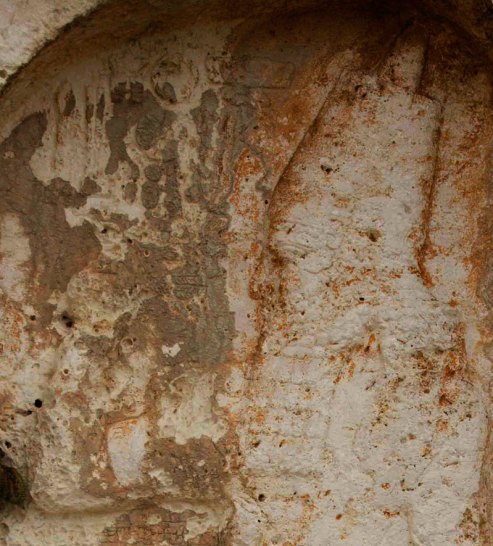
© Factum Arte
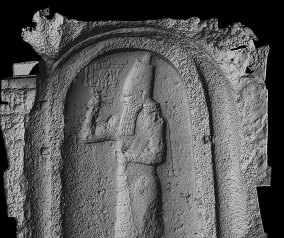
© Factum Arte
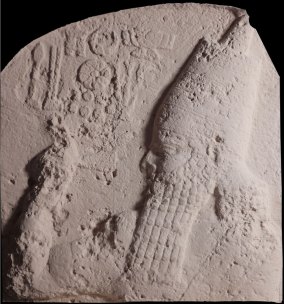
© Factum Arte
A new imperative
The recent spate of iconoclastic attacks has created a new imperative – we need to apply an approach to 3D recording that can be done quickly, with governmental support. Speed of recording tends to mean lower quality data, but if different organisations, technical specialists and universities are funded and work together, a planned approach to the capture of colour and 3D information can be achieved using a wide range of equipment responding to different circumstances. An important part of this approach should be the transfer of skills and equipment. This work must be carried out by paid local operators with local knowledge and a desire to be part of a major initiative.
The focus of any such initiative must, for now, be on recording and archiving. Data can be downloaded to centralised hubs, where it will be organised and stored until the time-consuming, systematic work of processing can begin. Expensive computers or server farms are essential. As a collective activity, this will grow rapidly into a vast archive of data and an open source model.
The technology is there – it is now time for the politicians to hand over to the technicians and to set demanding targets. With the right support and equipment, the growing team of people doing the recording can really make a difference. It is through the understanding of the past that we shape the future.
For more information about the different methods of 3D scanning visit the Factum Arte and Factum Foundation websites.

Can 3D recording help preserve threatened sites in Syria and Iraq?
Experimental preservation in action: photogrammetry at Nahr el Kalb, Lebanon, 2015. © Factum Arte
Share
Adam Lowe of Factum Arte explains the complicated situation behind recent optimistic media reports
The recent iconoclastic destruction carried out by the so-called Islamic State has focused the attention of politicians, journalists and the academic community on the urgent need to document cultural heritage. Mass tourism, war, natural disasters, theft and commercial exploitation are still much larger forces of damage and destruction, but the wilful disrespect for human life and archaeological remains in Iraq and Syria has shocked the world. Politicians have made public statements but have not yet been moved to action, but at least the discussion has started.
It is now essential that the right type of photographic and 3D recording is undertaken across north Africa and the Middle East, and that the resulting data is safely archived and eventually processed so that it can be made accessible for study, conservation, and in the worst case scenarios, to be rematerialised as replicas.
‘3D photography’ and media misunderstandings
There has recently been a lot of press coverage about cheap and easy ‘3D photography’ providing the solution in the Middle East. It has been possible to record stereoscopic images on ‘3D cameras’ since the 19th century, but these do not record three-dimensional data. In fact, so called 3D cameras record an illusion of three dimensions on a flat plain that can be viewed with glasses or as lenticular prints.
Photogrammetry, which is based on multiple images taken with a decent SLR camera and a constant light source, can record 3D data, and when the photographs are processed with the right software the results can be impressive. Done properly – following clearly defined protocols, with the support of multi-lingual websites and helplines – it is a relatively cheap and efficient method when access to sites is difficult, and heavy or sensitive equipment cannot be used. It is unclear from the present coverage exactly which methods are being proposed for use in Syria and Iraq, and it is sad that such an important subject is being reported with such a lack of research and understanding.
The Temple of Bel in Palmyra, Syria, as it stood before its destruction by ISIS on August 30th 2015
How much information is it currently possible to record?
In recent years 3D scanning has become part of a coherent and non-contact approach to the documentation of cultural heritage and its long-term preservation. A number of different methods exist, each with their own advantages and limitations (for further information on the different technologies, see Factum Arte’s website). The challenge is to identify the right system for the right application: no one system can do everything.
In photogrammetry, 3D data can be recorded on a vast scale, producing relief maps of the topography of a landscape from great distances. Alternatively it can be undertaken at close range and with enough resolution to document the surface of a carving – resulting in the visualisation of data not easily seen by the human eye. If this is processed with virtually generated RTI (Reflectance Transformation Imaging), high-resolution photogrammetry can be very useful for epigraphic study or condition monitoring where the ability to move the light-source can reveal important details that cannot be seen in normal photographs. Photogrammetry has the added advantage that colour and 3D are recorded at the same time.
A key part of this work is to record surfaces and forms at the highest possible resolutions, and archive them in raw formats, so the data can continue to be re-processed as technology advances. Processing data is time-consuming and requires powerful computers, software and skill. As a rule of thumb every hour spent recording in the field requires one day’s processing – and with photogrammetry the processing time can be longer depending on the resolution required. Raw data can be stored and archived whenever it is needed. So the chain of action is to record, to archive the raw data securely, and to process and make it available as the time and money becomes available. What is ultimately done with this data will be a collective decision influenced by many factors and professional bodies.
Using 3D data: the rise of high-resolution facsimiles
Digitality used to be associated with the virtual, but now the ability to rematerialise data as three-dimensional objects is demanding new skills and a different understanding of recording technologies and their application. Damage and destruction of popular heritage sites has prompted a re-evaluation of the importance of high-resolution facsimiles.
The first serious attempt in recent years to use a copy to protect an original was at Lascaux, a prehistoric cave site that was being destroyed by large numbers of visitors. ‘Lascaux 2’, a copy made and painted by hand, has been a great success. Chauvet, which opened this year, is the most recent example of a multi-million euro copy. It is also made and painted by hand, but running alongside these reconstructions is a new approach – a serious attempt to document sites digitally at high resolution, providing data for applications aimed at preserving and understanding the past in more detailed and objective ways.
The Sidio Pro Scanner (White light scanner) during the recording of the sarcophagus in the Tomb of Tutankhamun, spring 2009 © Factum Arte
The most widely reported example of this forensic approach is the facsimile of the burial Chamber of Tutankhamun, which was installed next to Carter’s house at the entrance to the Valley of the Kings and opened to the public in April 2014. It was made by Factum Arte – the workshop I run in Madrid – and was financed by Factum Foundation and the Friends of the Royal Tombs of Egypt. Nicholas Reeves recently attracted global attention by suggesting that he has found the entrance to Nefertiti’s tomb by studying the 3D scans used to make the facsimile. If he is correct, it will transform the way the academic and conservation groups view accurate surface recording.
As a public attraction, the facsimile is helping visitors understand the damage they cause, and the complexity of allowing sites to be visited while ensuring their long-term preservation. Such initiatives are leading to a re-negotiation of the relationship between the original and the authentic.
The importance of high resolution
Exact facsimiles are being made possible through advances in 3D recording, composite photography, an assortment of multi-spectral imaging techniques, image processing and output technologies – not all of which are necessarily available in conflict sites such as the Middle East.
One important but largely misunderstood factor, is resolution. The way we are using the term ‘resolution’ refers to the level of detail a 3D file contains. We evaluate the resolution not just by a theoretical description of the sensor of the scanner, but also by the correspondence between the scanned data and the original surface. Making a replica of a destroyed object is only meaningful in some situations: if the digital recordings don’t correspond to the surface of the object, they are of little or no significance as source material to make a replica.
Is the 3D data recorded using photogrammetry as good as we can gather with a close-range scanner? No, not at the moment. Can it be reprocessed at higher resolutions in the future? Yes, if the photographs are correctly taken and archived. Is it meaningful in the event of an object being destroyed? It is not a replacement, but it could allow lost artefacts to be studied and replicated in a meaningful way.
A new imperative
The recent spate of iconoclastic attacks has created a new imperative – we need to apply an approach to 3D recording that can be done quickly, with governmental support. Speed of recording tends to mean lower quality data, but if different organisations, technical specialists and universities are funded and work together, a planned approach to the capture of colour and 3D information can be achieved using a wide range of equipment responding to different circumstances. An important part of this approach should be the transfer of skills and equipment. This work must be carried out by paid local operators with local knowledge and a desire to be part of a major initiative.
The focus of any such initiative must, for now, be on recording and archiving. Data can be downloaded to centralised hubs, where it will be organised and stored until the time-consuming, systematic work of processing can begin. Expensive computers or server farms are essential. As a collective activity, this will grow rapidly into a vast archive of data and an open source model.
The technology is there – it is now time for the politicians to hand over to the technicians and to set demanding targets. With the right support and equipment, the growing team of people doing the recording can really make a difference. It is through the understanding of the past that we shape the future.
For more information about the different methods of 3D scanning visit the Factum Arte and Factum Foundation websites.
Unlimited access from just $16 every 3 months
Subscribe to get unlimited and exclusive access to the top art stories, interviews and exhibition reviews.
Share
Recommended for you
Museums must work together to combat cultural destruction
Julian Raby, director of the Smithsonian’s Freer and Sackler galleries, speaks to Apollo
Digital Innovation of the Year
Factum Foundation is using technology to record and conserve the world’s most fragile artefacts
Decorated and Replicated: the Cave of Pont-d’Arc
The Decorated Cave of Pont-d’Arc is 36,000 years old and the oldest cultural property on UNESCO’s lists. Its new replica is set to open in 2015.